Walking on Eggs
The phrase “walking on eggshells” is an idiom that is often used to describe a situation in which people must tread lightly around a sensitive […]
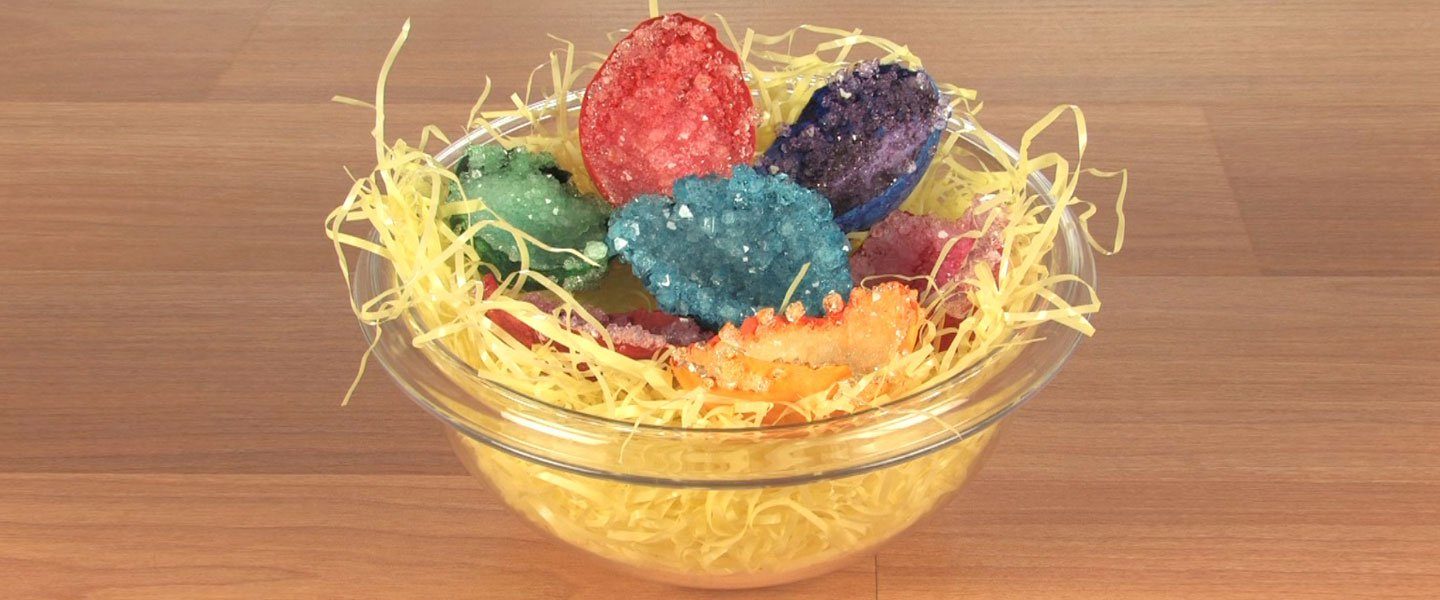
We love to do “eggs-periments.” We’ve made naked eggs, put eggs in a bottle, folded eggs, and we’ve even shown you how to decide if an egg is raw or hard-boiled. We continue to look for new and amazing things to do with eggs and the Incredible Egg Geode is “eggs-actly” what we want to share.
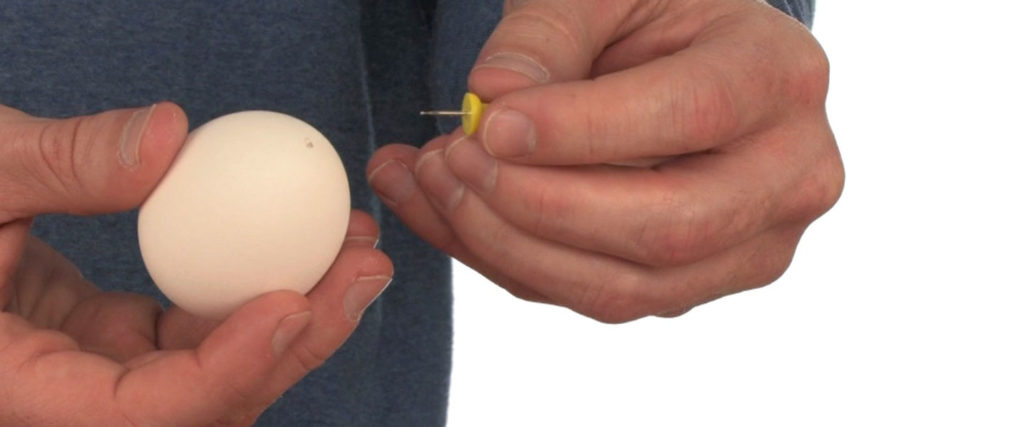
NOTE: Carefully wash each egg before you handle it or put your mouth on the shell.
You have an egg, now you need to get all the yolk and egg white out of it but you need the shell to stay pretty much in one piece.
Use a pushpin to carefully poke a hole in each rounded end of the shell.
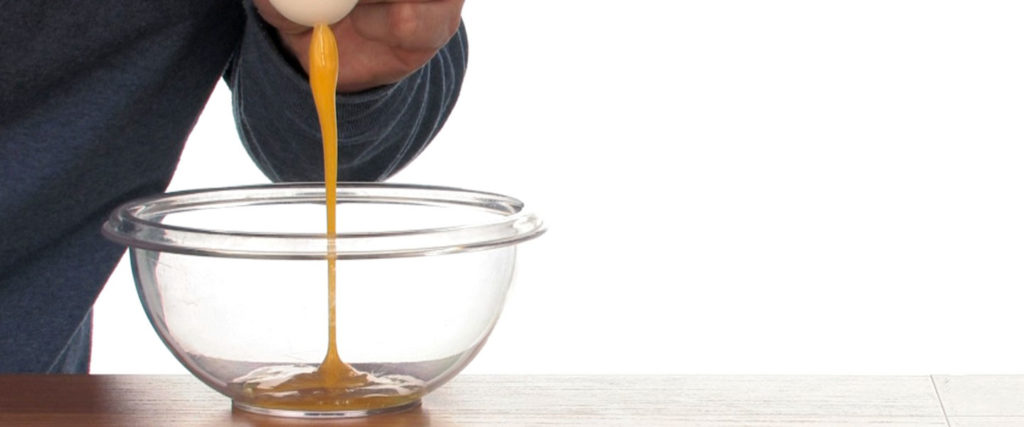
Put your mouth on one end of the egg and blow the yolk and the egg white through the other hole. This may take a while and isn’t too easy so don’t rush. Blow into a bowl or garbage disposal, depending on whether you plan to enjoy scrambled eggs or not.
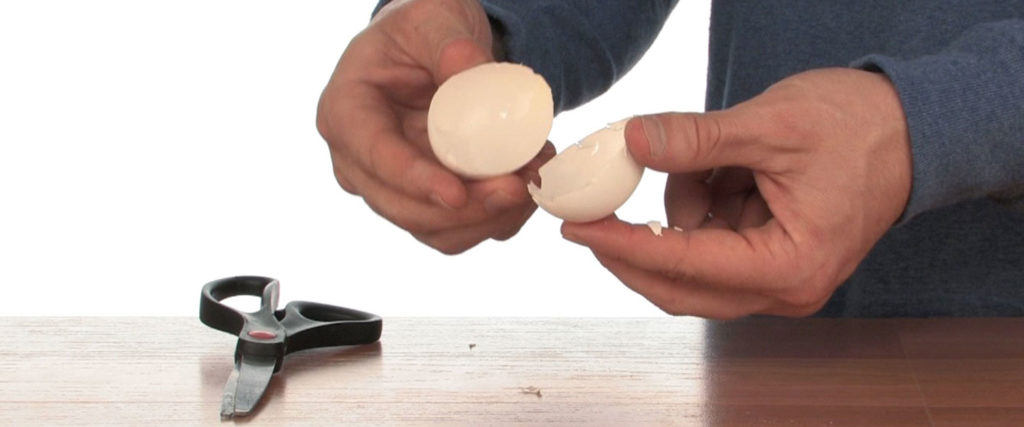
Now that you don’t have an egg so much as an eggshell, carefully cut the shell in half, down the egg’s length, with scissors.
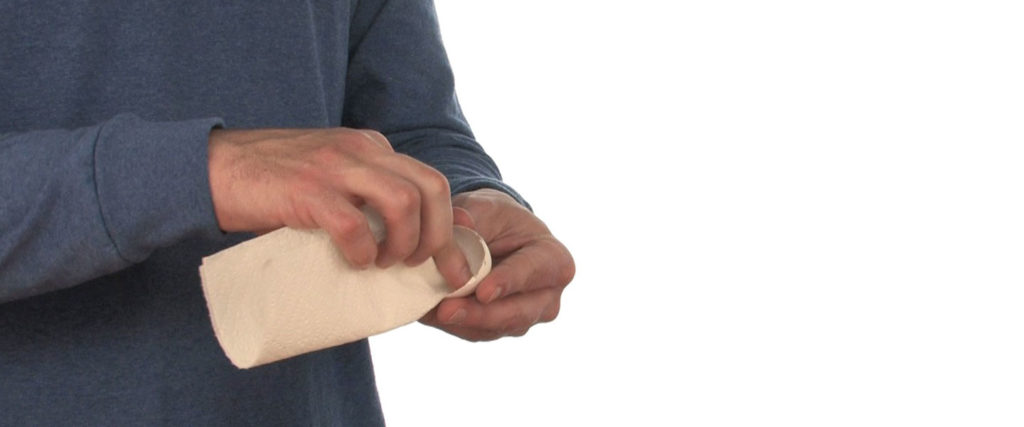
Carefully wash the inside of the shell halves with warm water and wipe them dry with a paper towel. Get the interior surface of the egg as clean and dry as possible without cracking it. Peel off and throw away small pieces of shell from around its edge.
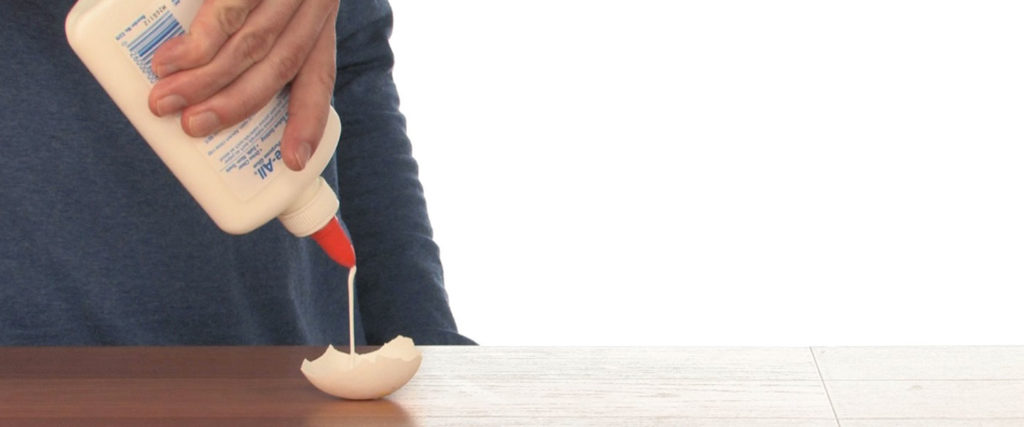
Generously drip some glue into the shell halves. A little on the outside is OK, too.
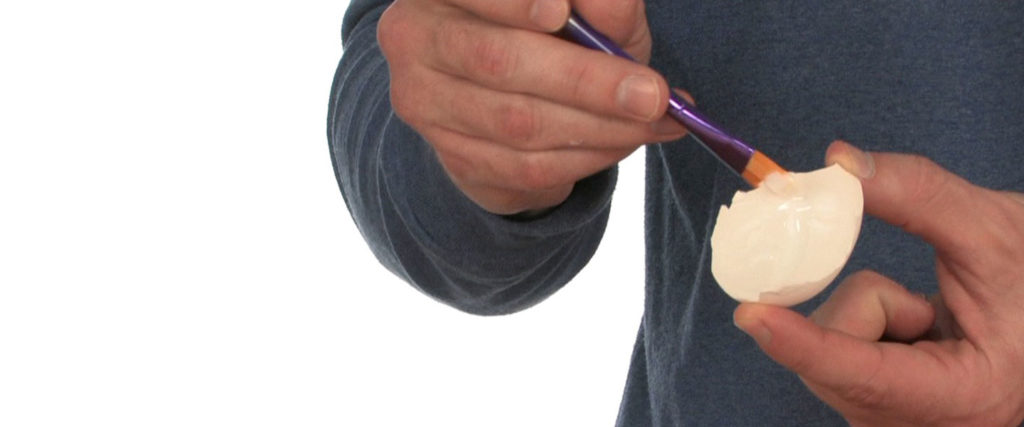
Use the paintbrush to spread the glue all over the inside of the shell. Completely cover the interior surface with glue all the way up to, and including, the edges. Use more glue if needed.
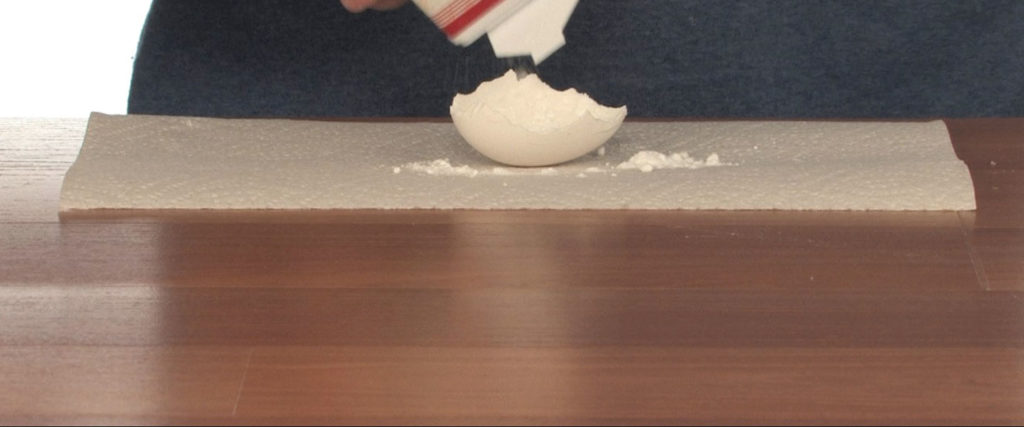
Generously sprinkle lots of alum powder on the wet glue.
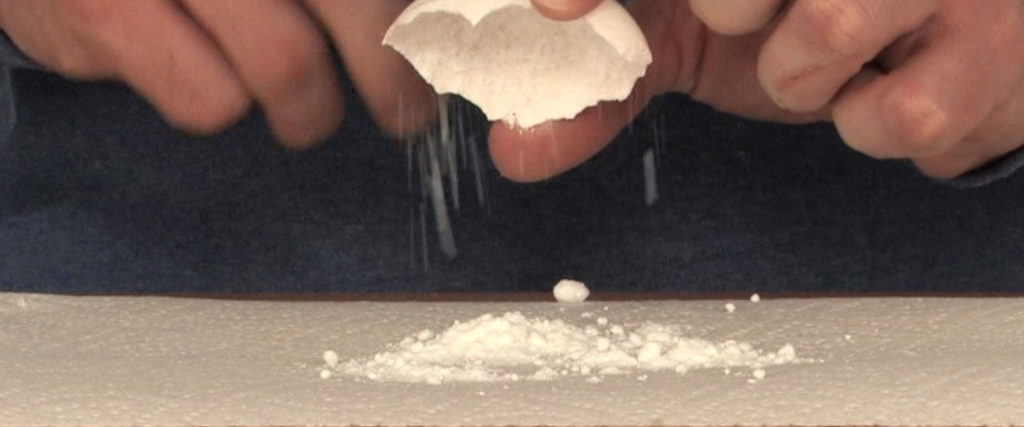
Turn the shell-half over and gently tap out any excess alum. Place it on a paper towel or paper plate to dry overnight.
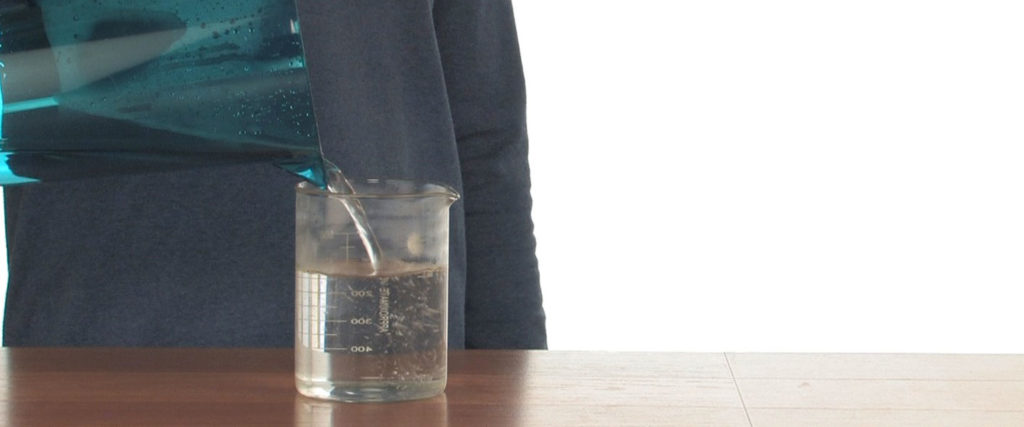
The next day, bring two cups of water (473 ml) almost to a boil and pour it into a bowl.
NOTE: If you plan to make more than one color of geode, use one cup (237 ml) of water and adjust the food coloring and alum amounts accordingly. See the “Take It Further” section below.
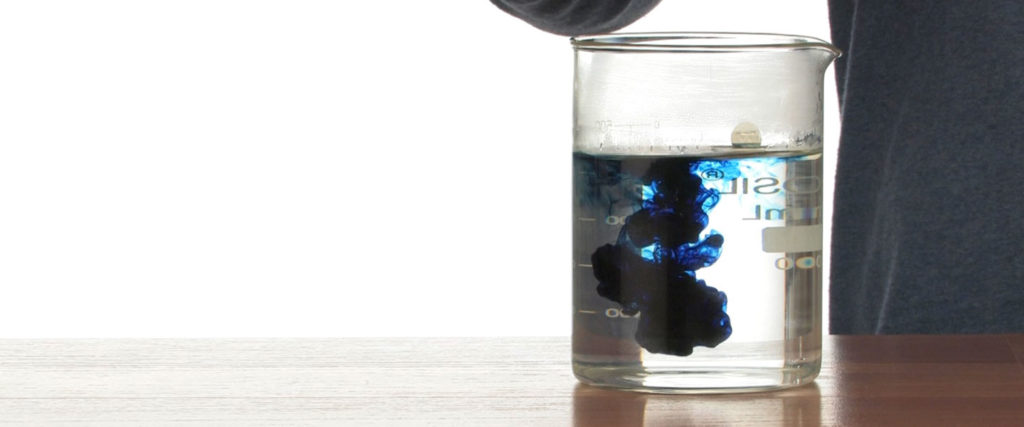
Dissolve 30-40 drops of food coloring into the water. Use any color or color combination you wish. Stir it well.
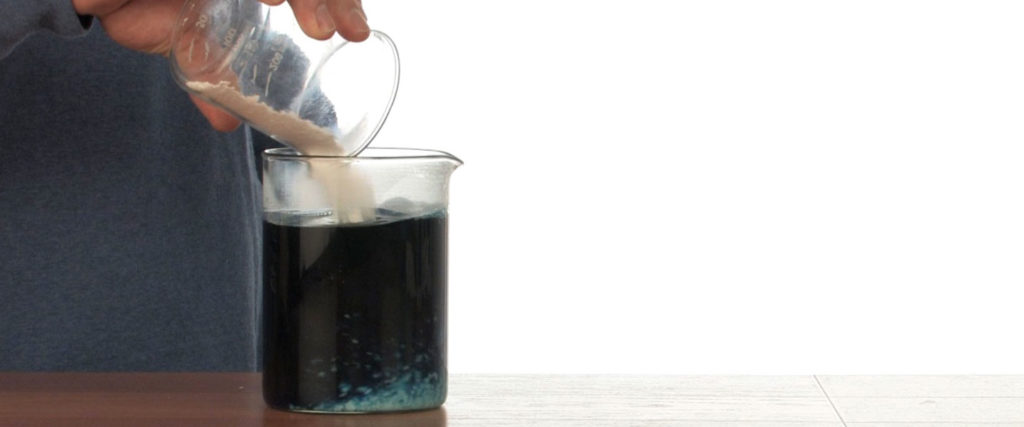
Dissolve ¾-cup alum powder into the water.
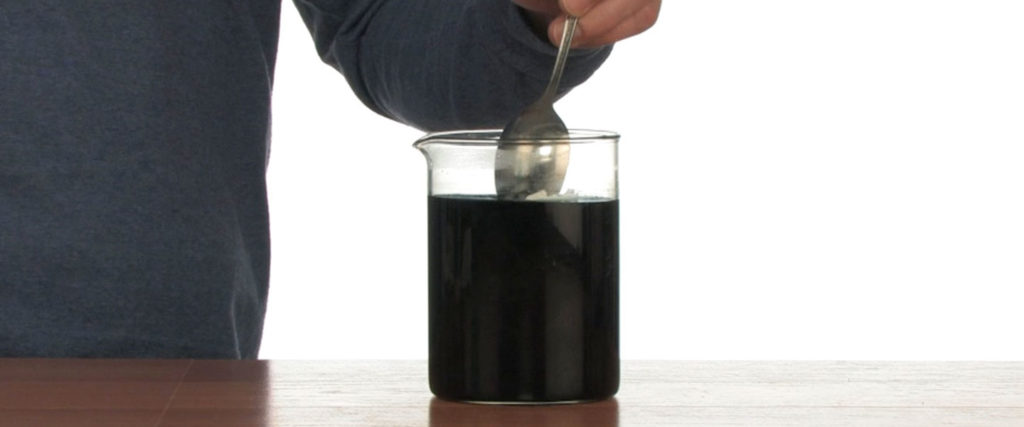
Stir it well and make sure it dissolves completely. Let the mixture cool for 30 minutes.
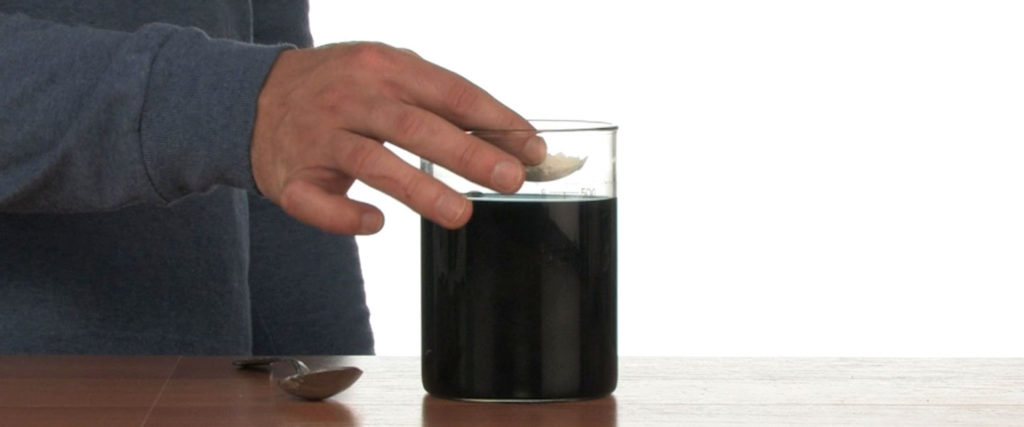
When it’s cool, place the shells into the solution alum-side up. Gently push the shells to the bottom of the solution with the spoon and allow them to sit there for 12-15 hours.
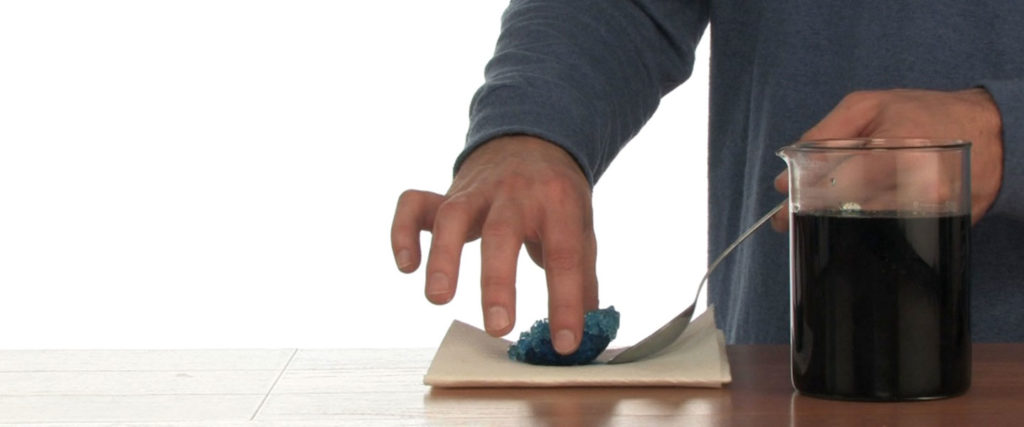
After 12-15 hours, alum crystals have grown! Carefully remove the shells and place them on a paper towel to dry and finish the geode-creation process. Perhaps you can leave them in the bowl longer and see if they grow bigger.
Your eggshell geode is formed through a process called sedimentation. While a geological geode is a mass of minerals within a rock that can take thousands, even millions, of years to form, your Incredible Egg Geode only takes a couple of days. The heated alum solution contains suspended particles of alum powder in it and as the solution cools, these particles of alum begin falling to the bottom. When the alum particles settle on the bottom, they begin crystallizing. Coating the shell with alum powder beforehand gives the suspended alum particles a surface to which they can more readily attach themselves. The particles that settle onto the interior surface of the shell crystallize quickly but you will also see evidence of crystallization on other parts of the shell as well as on the bottom and sides of the bowl.
You can test using a cup of water (or maybe less) per eggshell to make your geodes. The amounts of food color and alum you use will have to be adjusted proportionately. That way, you might be able to make several colors of geodes at once. There may be other materials to test that will grow crystals, e.g. borax, Epsom salt, salt, sugar. Be sure to share your results!